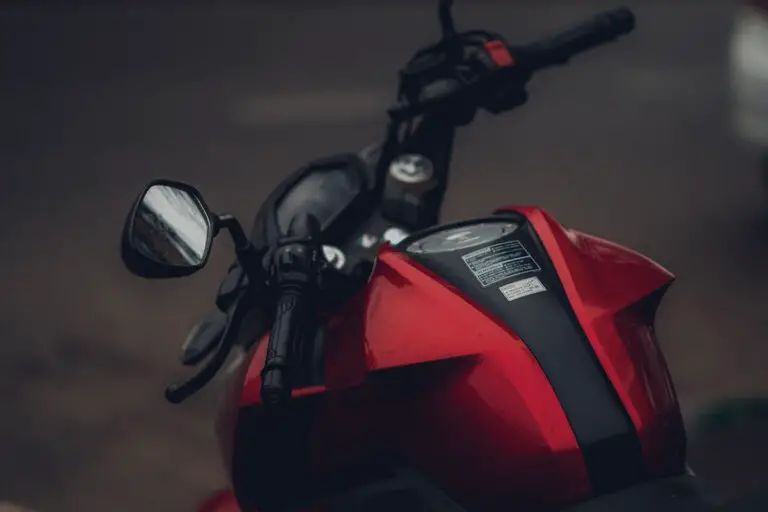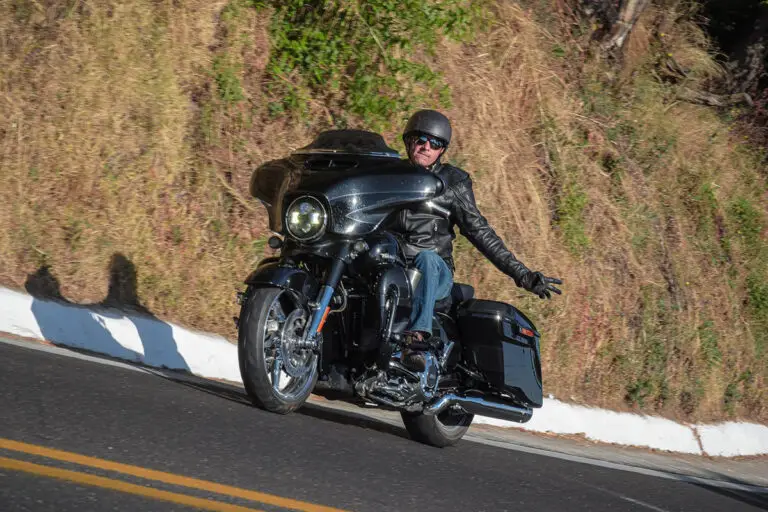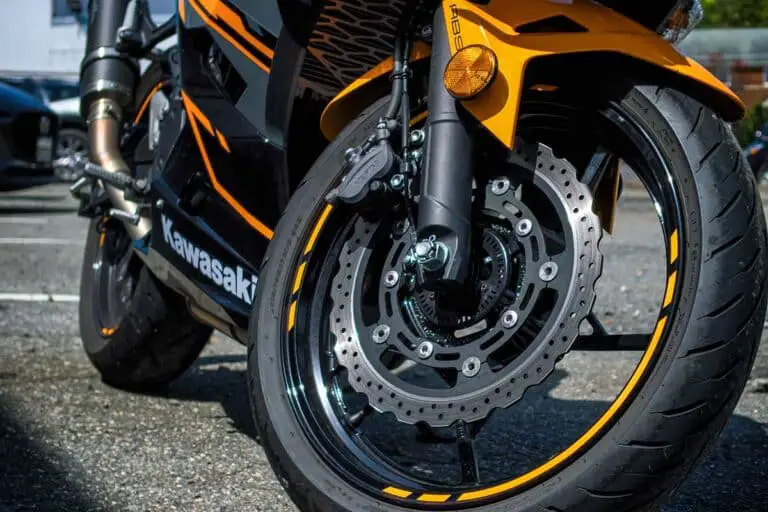Wet Clutch vs Dry Clutch: What’s the Difference?
Disclosure: We may get commissions for purchases made through links in this post.
With the advent of design and tech advancements, more folks have become increasingly interested in bigger and better-performing motorcycles. A smooth and comfortable ride simply would not cut it nowadays, as consumers are drawn to thumpers with only the best to offer — from styling down to their clutch assembly. At this point, the difference between a wet clutch vs dry clutch begins to matter.
So, what is the difference between a wet clutch and a dry clutch? Dissimilarities between these assemblies lie in their working principle. Dry clutches rely on friction and are less capable of cooling down components and dampening engagement, while wet clutches utilize engine oil/lubrication.
If you have a recent-model two-wheeler, chances are you have a wet clutch assembly. Otherwise, your thumper may be equipped with a dry type.
Both are designed to let you control power transmission to the rear wheel and get your bike moving — which is why it pays to know their differences to properly care for and add to their longevity.
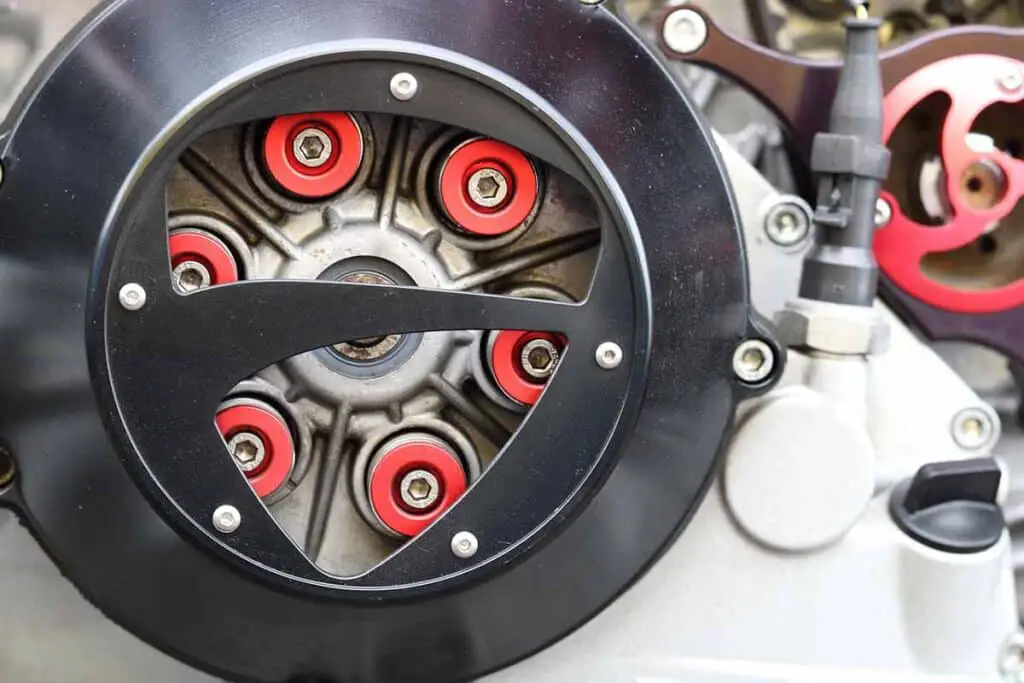
Revisiting Different Clutch Assemblies
In recent decades, clutch performance has received significant attention from OEMs and consumers alike. From the manufacturer’s end, it is so that they can keep up with the competition and the times.
But from a rider’s perspective, it is because the clutch serves as the “backbone of power delivery from a motorcycle’s crankshaft to the transmission” — one that provides structure and character to any given two-wheeler.
As such, motorheads soon developed a newfound interest in the inner workings of their clutch assemblies and the disparity in performance between the different clutch types. Many have started to question the difference between a wet and dry clutch and which is better.
This line of thought brings us to the gist of today’s guide. But before we delve into the differences between these clutch assemblies, let us briefly revisit their origins and how their respective designs improved through the years.
Dry Clutch
The dry assembly is said to have been used commercially earlier than its wet counterpart — as early as 1893 by Frank Duryea on his gasoline-fed, secondhand carriage. Its initial configuration was a single-plate or two-plate type, lined in leather and bathed in oil.
Because of original materials not handling friction well and how primitive the design was, these dry clutches burnt out no more than a hundred miles of travel.
It took another three decades before a robust design constructed from more durable friction materials and with a longer service limit came to fruition. Thanks to Yorkshire-raised Industrialist Herbert Frood, who specialized in frictional surfaces (made from woven cotton infused with natural resin and, later, with phenol formaldehyde resin) and was better known for inventing brake pads (view on Amazon) in 1921.
Wet Clutch
Not long after the dry clutch was first used in vehicles, Professor Henry Selby Hele-Shaw invented the multi-plate wet clutch. Unlike its dry counterpart, this layout did not rely heavily on friction. Professor Hele-Shaw’s expertise in viscosity and similar fields played a major role in this groundbreaking design, used beginning in the 1900s.
Superficially, the wet and dry clutch are very much alike — with a stack of plates and a divided central shaft enclosed in a clutch housing. Alternate plates are keyed to either the input or output shafts, with a pressure plate compressing the stacked plates and engaging the clutch to transmit the drive.
The main difference between a dry clutch vs wet clutch is that in the Hele-Shaw design, the plates in question are “lightweight pressings from thin sheets of steel” with a ring pressed into each and operated by viscous flow instead of friction. Theoretically, the methodology by which it operates offers 100% efficiency versus the dry clutch design that lacked the ability to disperse heat effectively at elevated operating temperatures.
Clutch Anatomy
Wet and dry clutch assemblies share many similarities, especially in their components. These consist of the primary drive, clutch basket (view on Amazon), clutch plate, hub, clutch springs, clutch cable, pressure plates, basket sleeves, and lever.
Most of these components work interdependently and are driven mainly by pressure. Meanwhile, the rest function independently and are responsible for disconnecting the engine from the gearbox and allowing the rider to shift gears.
What is a wet clutch, then? Wet clutches are functionally the same as dry clutches since they transmit torque from the drive motor to the gearbox. However, they differ from the latter in their structure and how they operate.
Wet clutches use engine oil as lubrication to transfer power through mechanical fluid couplings. Because they are oil-bathed, they use a multi-plate structure to offset the loss in power.
Progression of the Motorcycle Clutch
Since its beginning in the late 19th century, the clutch design has come a long way and inspired several variations — cone, band, single-plate, multi-plate, and centrifugal included. Of all these concepts, the cone clutch was the earliest, initially utilized in vehicles but later found favor with some motorcycle OEMs.
The 1912—1914 liter-class Williamson Flat Twin was a motorcycle produced by Douglas and one of the first two-wheelers to employ the cone-clutch design. The firm later influenced other motorcycle manufacturers to do the same, including Indian, BMW, and Harley-Davidson.
Companies used clutches individually or in conjunction with variable-ratio pulleys and gearboxes to power their two-wheelers.
Wet clutches are inherently more reliable than dry clutches since they do not rely on friction and instead use viscous flow (as earlier established). This is the very reason they are predominantly used in modern-day two-wheelers.
However, many motorcycle firms (especially those producing racing/competition bikes) still stick to dry clutches due to the absence of fluid drag and their trademark explosive sound.
The Ducati dry clutch in the Panigale V4 R is a perfect example of the undeniable power delivery and distinct rumbling sound that can only come from a dry clutch, now considered somewhat of an endangered species due to emissions and legislation restrictions.
What Is the Difference Between a Wet Clutch and a Dry Clutch?

Though we have partly covered this point by detailing the origin and progression of each clutch assembly, let us further answer this question by citing their dissimilarities in certain parameters and going over the highs and lows of each clutch type:
Wet Clutch vs Dry Clutch Comparison
| Parameter | Wet Clutch | Dry Clutch |
|---|---|---|
| Working Principle | Relies on viscous flow; Necessitates stiffer springs and gripper plates because of wet clutch oil reducing friction between the stacked plates | Relies heavily on friction; Necessitates durable friction materials |
| Power Transmission | Uses mechanical and fluid couplings (made possible by rotating friction plates immersed in lubricant) to transfer power | From its default engaged position, the clutch disengages power to the transmission, ultimately allowing gearshifting |
| Load Capacity | Its multi-plate design utilizes a stack of smaller-diameter platesm, making it compact and easier to package | Its single-plate assembly requires using a large disc to achieve greater load capacity, which consumes a lot of space |
| Design Aftermath | Its engine dynamics results in better throttle responsiveness; Compliant with stringent noise-emissions restrictions | Have a higher coefficient of friction that results in reduced parasitic losses from the drivetrain; Non-compliant with noise-emissions restrictions |
| Application | Fit for street-legal, adventure, touring/cruising bikes driven on varying road conditions and in slow-moving traffic | Suitable for racing, competition, or MotoGP bikes due to its greater power output and the absence of fluid drag |
Wet Clutch vs Dry Clutch Pros and Cons
Wet Clutch Pros
- It runs cooler and is generally more robust
- Multiple plates compensate for slippage
- Suitable for high-torque scenarios because of its oil-bathed setup
- It works on lighter spring pressure and requires only light lever effort
- It has a longer service limit compared to a dry clutch
- Offers a wider engagement threshold, making it easier to use
Wet Clutch Cons
- Its wear particles contaminate the engine oil
- Its use of clutch oil results in fluid drag
- Messier to work with since it is oil-bathed
Dry Clutch Pros
- Transmission efficiency is high due to no lubricant involved
- It does not contaminate the engine oil since it does not operate on lubrication
- Ideal for low-torque scenarios
Dry Clutch Cons
- Riding it in the ‘friction zone’ more often lends to its premature wear
- It makes a louder noise and not as smooth when engaged
- It has a shorter lifespan compared to wet clutches
When to Use Wet vs Dry Clutches
There is no cookie-cutter approach to determining when to use one clutch assembly over the other. Often, motorcycle owners just work with the clutch fitted into their two-wheeler. But if you’re in a position to choose, below are some significant factors to consider:
Safety
Out of the crate, no clutch concept is impervious to damage and truly out of harm’s way. But with repeated use, a wet clutch seems to exhibit more predictable frictional characteristics that make it substantially safer.
The thing with dry clutches — whether automated or dual-clutch — is that they overheat much faster than their wet counterparts. This overheating leads to a fast (sometimes erratic) change in frictional characteristics of the assembly and poor gearshift control, either of which could result in permanent damage to the clutch facings.
This aftermath could occur anytime, anywhere, and is not a situation you would want to find yourself in on-road.
Application
Opting for a motorcycle with a dry clutch over a wet one depends on your thumper’s application. While these clutches are functionally the same, a dry clutch works better in low-torque scenarios. Meanwhile, a wet clutch is more suited for high-torque scenarios.
That said, ride a two-wheeler with a wet clutch assembly if you mean to cover day tracks, a lot of off-road, and other similar riding conditions. Conversely, choose a motorcycle with a dry clutch assembly if you intend your motorbike to serve as a city/daily driver.
Driver Skill
Having a two-wheeler equipped with a wet or dry clutch assembly may not matter to the skilled rider. But for the inexperienced, it certainly does.
Between a dry clutch and one that uses a wet clutch motorcycle oil, the latter is easier to operate and, hence, more user-friendly. Not to mention that clutch components have less propensity to overheat, which may prove bothersome for a beginner rider.
Operational Efficiency
In this area, no clutch assembly is inherently better than the other. After all, they are both subject to problems such as chattering, dragging, grabbing, and slipping.
These predicaments are but expected of any clutch concept due to their design and the nature of their function. Also, note that these challenges are attributed to one or more parts of the entire assembly and not just the type of clutch alone.
Chattering is usually associated with collapsed or damaged damping springs. In like manner, dragging has to do with warped plates, the adjustment of the clutch cable (if mechanical), or the presence of air in the system (if hydraulically operated).
Grabbing is caused by a failing spring plate (often the case for high-mileage or vintage thumpers). As for slipping, it could occur due to a misadjusted clutch cable or a worn-out clutch.
Repair and Replacement Costs
There is not much difference between wet and dry motorcycle clutches in terms of price. On average, a clutch repair or replacement costs between $500 and $2,500 (including parts and labor).
However, this estimation would only be true if comparing classes of a specific motorcycle type and if the said system does not come with extraneous clutch components or special add-ons.
Conclusion – Wet Clutch vs Dry Clutch: What’s the Difference?
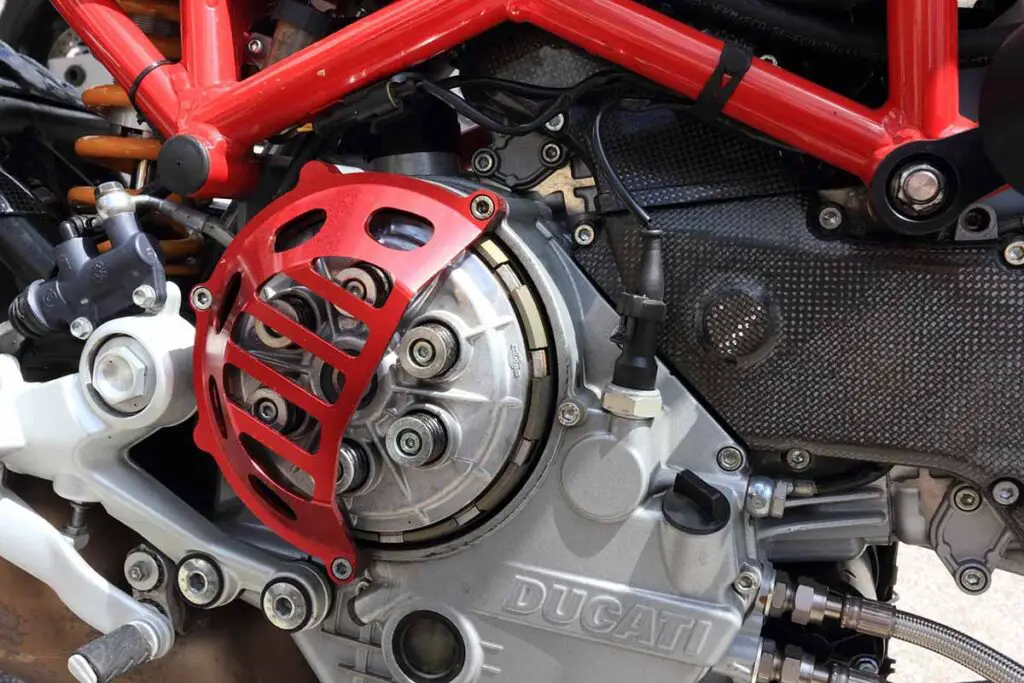
In a nutshell, the main difference between wet and dry clutches is in how they operate. Wet clutches are oil-bathed and function through fluid coupling, while dry clutches rely on friction.
Given periodic maintenance and proper care, there should be little to no difference in the reliability and performance of both assemblies. But if small advantages matter to you, opt for the clutch type that offers the best benefits.


